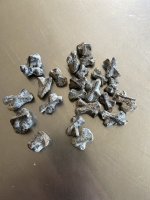s1u2r3f4
Sr. Member
- Oct 15, 2011
- 421
- 186
- Detector(s) used
-
Minelab Excal II
Minelab Explorer ll
Sov Gt
- Primary Interest:
- Metal Detecting
First, I apologize in advance because I know this has been covered somewhere. Ok, I've been hitting it everyday since the high winds and seas. I know that dimes and pennies are light and sinkers and quarters are a good sign that the beach has been scrubbed. But it drives me nuts when I find all that at one beach and no pattern. Dimes right next to quarters, lead next to pennies and precious metals nonexistent. Right when I think it all makes sense 

Upvote
0








